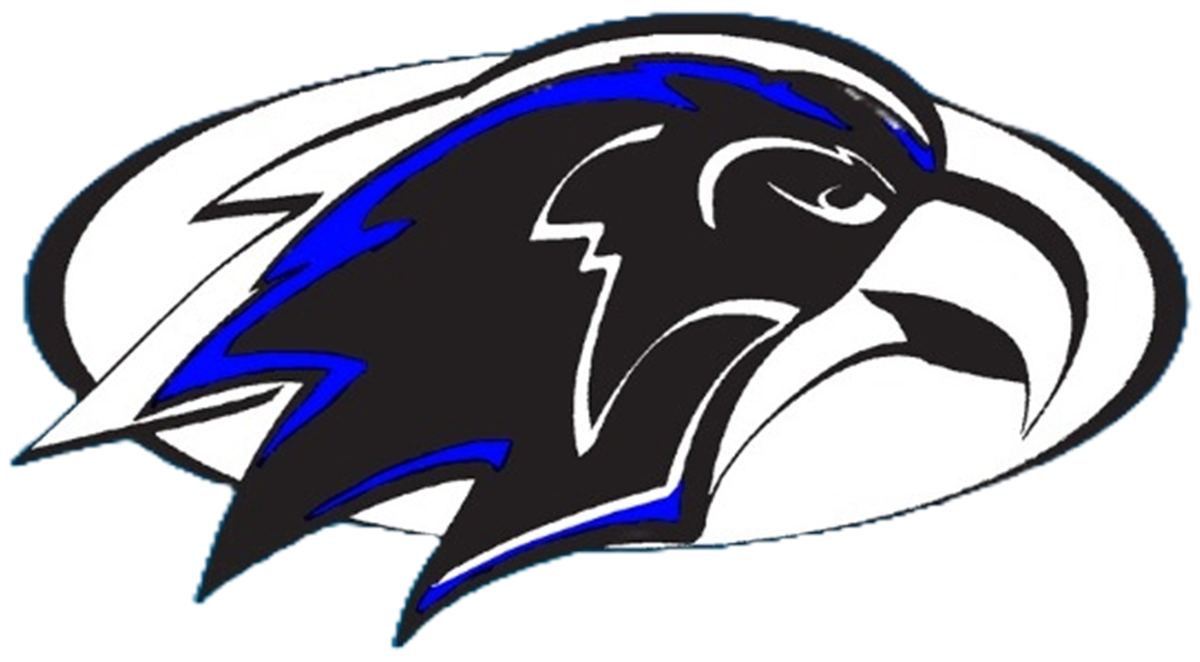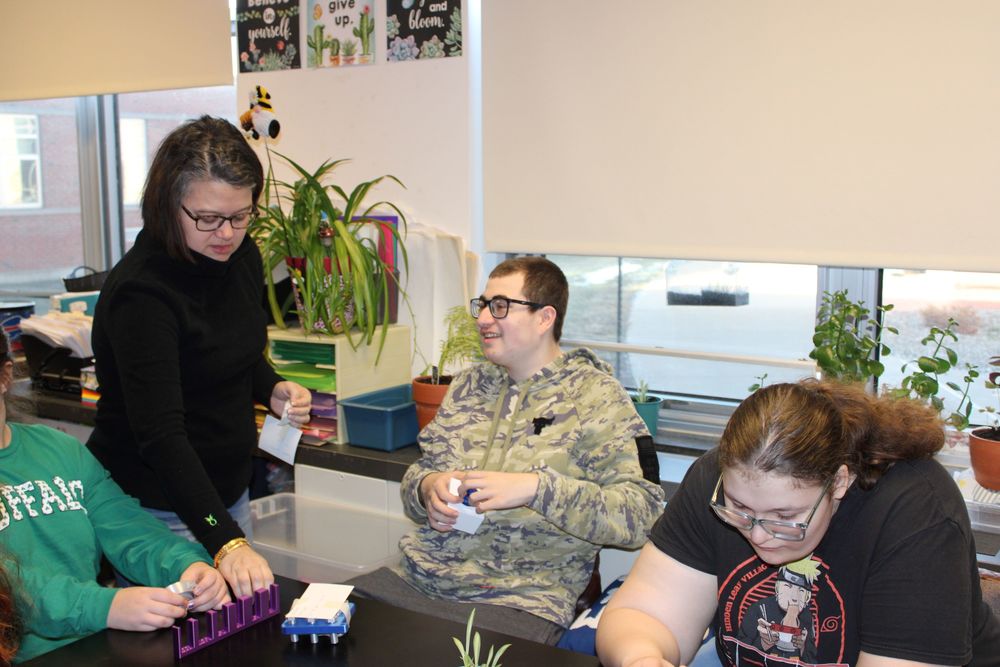A Frontier High School collaboration between George Ouimet’s Design and Drawing for Production class and Megan Comerford’s Special Education students has yielded tools and toys that are educational, fun to use, and solve problems. What could be better than that!
“Universal design is the concept. As an engineer or a designer, the product that you make should be accessible to all types of people, specifically to people with disabilities,” said Ouimet, a Technology Teacher. “I feel that as an engineer, you need to be able to practice that skill, and one of the ways you do that is in a helpful manner. The kids design products, we test them, and we then donate them to anyone who needs them.”
“George came to me with the idea and asked if I would be willing to come down and meet with his class and talk about the population I teach and what I’ve seen in my 24 years of teaching,” Comerford said. “It was interesting to talk to the kids and help them realize that the sensory inputs they crave are the same things that my students will be looking for. It’s just a matter of making things in an accessible way.”
Ouimet’s students design the tools and toys on a computer and then use the school’s 3D printers to make products they hope will meet a need.
“Megan’s students use the therapy tools and toys and test them out and give us feedback on how they work,” Ouimet said. “If you don’t have a disability, you often see that through just your own lens. This project helps students think a little more critically. They have to do research on different disabilities, and how they affect people.”
“One of the things we focus on is motor function. It shouldn’t take too fine of a motor function to actually use the product. There are some kids with cerebral palsy or Down syndrome who don’t have perfect motor function. We have to design around that. Engineering is all about creating a product that solves a problem within a given set of constraints,” Ouimet said.
The collaboration has been valuable for both students and teachers alike.
“Her students use the therapy tools and toys and test them out and give us feedback on how they work,” Ouimet said. “I don’t have a background in special education and Megan knows exactly what her students like and don’t like and what would benefit them. Having her here was an invaluable resource.”
“The kids were thinking outside the box in trying to come up with things they hadn’t seen commercially before,” Comerford said. “I challenged them not to recreate something they can easily buy, but to think of another way to make it accessible in the classroom.”
Many commercially available products are larger, more complex, and harder to clean.
Some of the toys and tools Frontier students have made are fidget spinners, Plinko-like boards and a coin sorter.
“Universal design is a concept. There are several key pillars to it. One of those pillars is accessibility and the ease of understanding,” Ouimet said. “Kids shouldn’t need an instruction book to figure out how your product works. That’s one of the things they’re trying to incorporate.”
Ouimet’s students enjoy the process.
“It opens up ways for me to learn new things and it’s interesting to do and fun to create new products,” said senior Ivanna Effa Edoa, who made a box that has texture that can help students dealing with stress.
“It’s a great opportunity, and I appreciate the school for giving us all these resources that we can use,” said junior Chris DiPronio, who made a fidget ring that can rotate any way possible and not fall out of the circle that it’s in.
When her students were playing with the products, Comerford would ask them questions: “What was your favorite?” “What did you like about it? “Why did you think it was fun?”
“With one toy, one said I like the sound, and another said I like the way it moves. They both like something, but maybe not for the same reason,” Comerford said. “It encourages communication between peers. It also helps them understand the nervous system and how it’s working. I have some kids who are super sensitive to noise input, so it can help them build tolerance."
“It definitely helps with sensory regulation, and it definitely helps to develop their cause and effect understanding,” Comerford added.
The project and the products also have something else that even a major company would crave.
“It’s really cool,” Ouimet said. “We’ve got some really creative designs here.”

